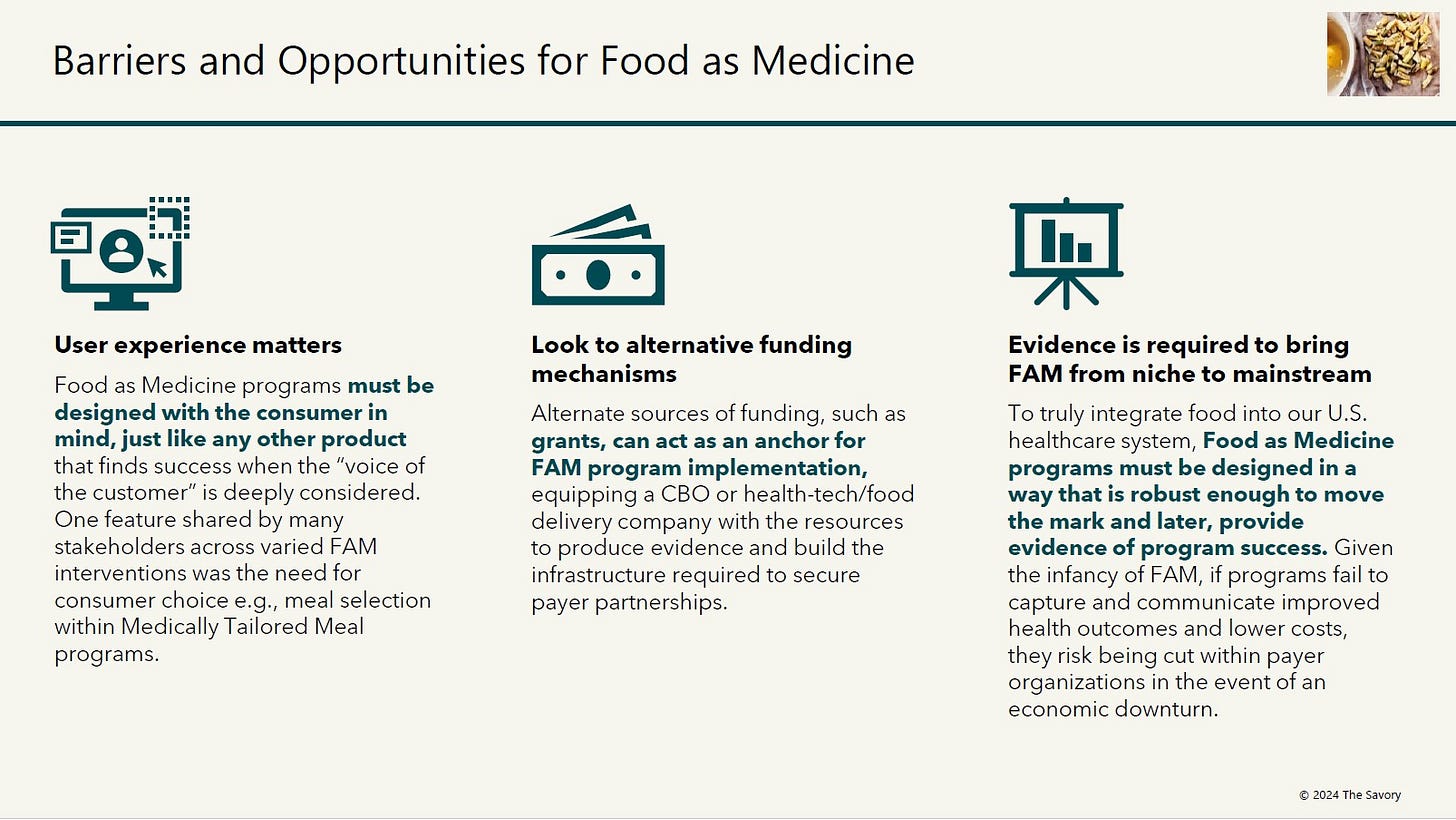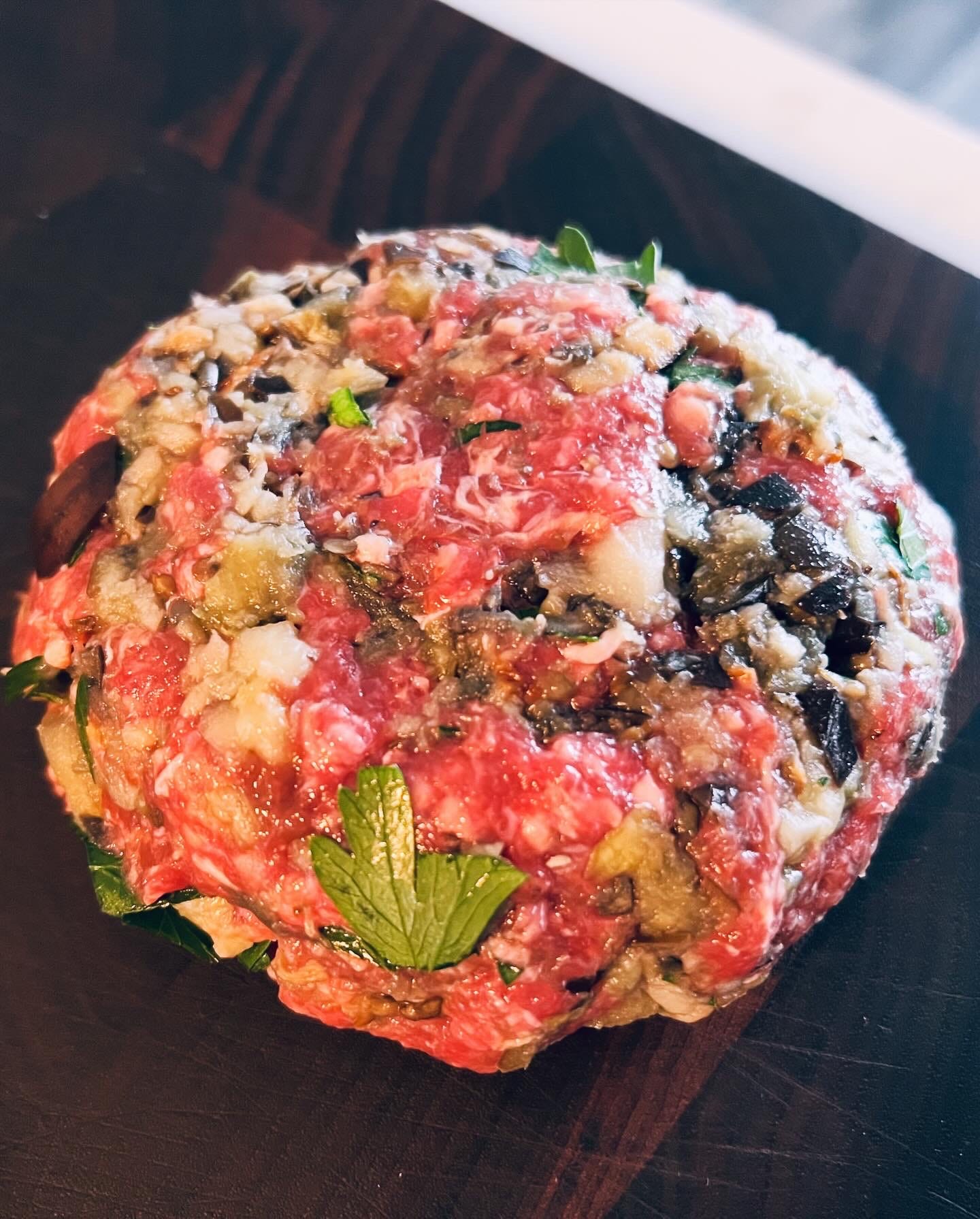Let's use what we've got - Veggies and Offal make for a damn good burger
Plus, some musings on Food as Health
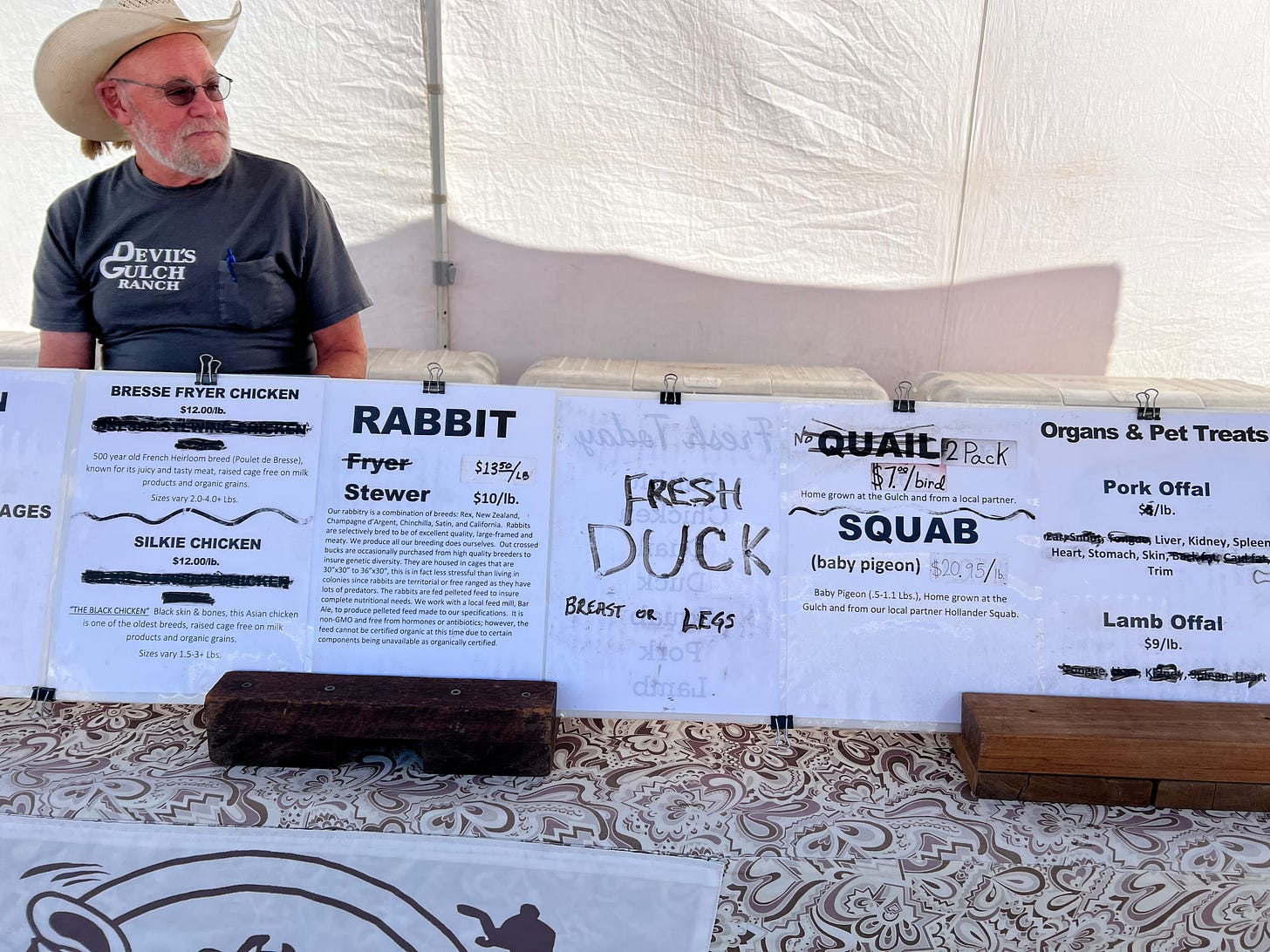
Note to readers: I can’t thank you enough for being here. It can be difficult to find the time (and attention span!) to read or prepare a meal. My hope is that through these words we are one step closer to a richer food system.
There is so much to explore, I easily find myself in an analysis paralysis. The connections between food and health are never-ending, and the movement towards using food as a tool to treat chronic disease is changing by the minute. Currently, there is work underway to establish medical billing and coding for Food as Medicine interventions, ag-tech entrepreneurs delivering food quality transparency, and food writer/historians uncovering recipes under threat of extinction due to the convenience and sterilization of our modern food system.
The first time I prepared a whole chicken, I was a bit freaked out. In my early 20’s, the only way I knew was by taking the lean, pristine-looking breasts out of their squeaky package and pan-frying in just enough oil, a tablespoon at most, so they wouldn’t char. I treated fat and raw meat as something to be feared, cleaning my counters and every nearby utensil meticulously with antibacterial kitchen spray until I was certain the poor hunks were more than well done. Is that the faintest tinge of pink? I’m almost positive it’s the lighting, but better safe than sorry. Back in the pan they go.
The whole bird was as thrilling as it was nerve-wracking. Staring at what I figured must be a heart and a lung (or a liver, perhaps?) I told myself - Chérie, if you can’t do this, then you don’t get to eat chicken or any meat for that matter. Period.
I have a suspicion that my unfamiliarity is not unique, and I can’t imagine all the incredible meals and moments I would have missed had I not pushed myself across the chasm. Despite 10 years of epic hits and misses since that first, most awkward dance, the possibilities concerning raw ingredients and their varied forms of preparation continue to grow. And I can’t help but wonder, what if purchasing a whole chicken was no longer an option?
I don’t think this notion is far off - if there is no longer demand, supply will follow suit. Nancy Harmon Jenkins (you can find her incredibly soulful and grounding Substack here) recently introduced me to Elisabeth Luard’s European Peasant Cookery. These are seasonal recipes often optimized for resourcefulness, a dynamic that lends well to flavor. The first recipe I’ll try is for a whole chicken roasted in nothing but olive oil, herbs, and garlic, butchered into segments, and served alongside crusty bread and cloves that will transform into a butter of sorts having confit in the drippings. A glass or two of table wine, the good company of a loved one or oneself, and I’m in heaven.
So much land, so many empty calories
A recent NYT Opinion piece shares a high-level overview of the various ways our global food system is unsustainable. I have no idea how there aren’t major sirens going off given the fact that, as Wallace-Wells noted, it’s estimated we will need to convert land equaling the size of two Indias, putting our planet in an even more precarious climate crisis. From spurring a silent epidemic of chronic disease to a death loop of increasing carbon emissions, if we want to not only produce enough calories to support life, but calories that are nutrient-rich so humanity can thrive, there’s a ton of rewiring that needs to be done within our food system.
Why do I care? Because I grew up eating junk until one day my parents spent what little money we had on locally grown, whole foods on the chance it might help my sister battle a rare form of cancer. I experienced the two extremes of the food paradigm, and my life made a 180 in parallel with my diet. Food = Health and Health = Life. I don’t want to live in a world where if you’re rich you’re healthy and if you’re not, you have to suffer with the day-to-day burden of poor health. I don’t want to live in a world where the option to purchase nutrient-dense, whole foods is no longer an option. Unlike my sister’s case - a rare form of cancer - our society is in a vicious cycle of chronic disease and massive expense largely due to our dysfunctional food system.
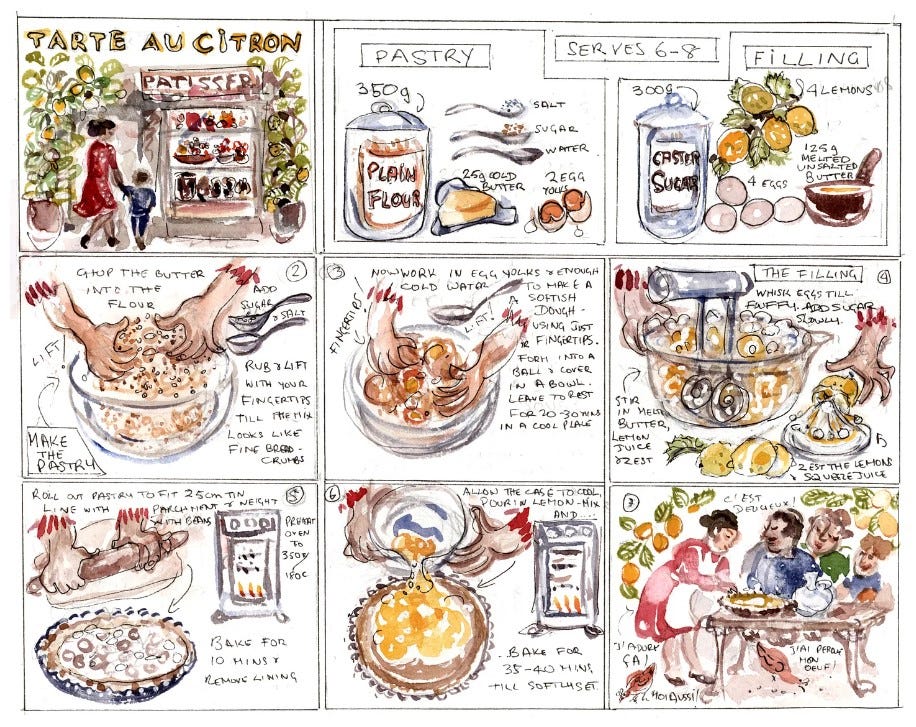
I keep thinking about one of Carter Williams' recent posts mentioning how farmland held by institutional investors is ripe for disruption. What if that land was used to deliver greater value with the products it produces? Rather than optimizing for yield, the focus shifts towards nutrient density and corresponding labels to inform not only the healthcare ecosystem implementing Food as Medicine but also consumers who want to optimize for increased flavor and health benefits.
One of the best business lessons I learned in recent years is the power of incentives. There needs to be a strong business case - i.e., one that grows the bottom line - for Big Food to pay both the risk premium and transaction costs of shaking up their business model. I don’t know enough about the business of Big Ag to dive any deeper, but what I do know is that if your net income at the end of the day is big and fat, there is little incentive to do anything different. Perhaps there is economic pressure that might put mid-sized organizations in a position where they have no choice but to take a massive risk or fail. I know what I would do.
To any readers who can share more insight re. the Ag space, I would love to hear your thoughts in the comments!
Please don’t mind my riffing, but I often wonder what it would take for nutrient-density label creation and corresponding farmer contracts. What are the other critical pieces of the puzzle? Distribution and Marketing? I can’t speak to distribution - perhaps some form of technology to maintain quality and optimize for locale. Marketing and Brand strategy however, is my sweet spot, and where I see so much potential. I can’t tell you how exhausting it is to watch the same ultra-processed junk wrapped in even more deceptive, oh-so-trendy packaging. Hi there Millennials and Gen-Zers - how could anything plant-based possibly be bad for you? Try to find a cracker without sugar or inflammatory seed oils. I couldn’t, so I started making my own. It’s kind of like a workout first thing in the morning; it might be tough to get going, but once you’re in the zone, it’s goodness. Plus, the satisfaction felt on the other side. Only this one comes in the form of scraping butter over a crisp, warm vessel of rosemary and rye alongside a steamy cup of coffee.
Food as Medicine - A Primer
What’s going on in this new space of healthcare? In many ways, CMS is the ultimate gatekeeper. They are who approve Section 1115 waivers and are paving the way for care coordination between primary care providers, specialists (e.g., mental health), and social services such as SNAP enrollment to achieve and maintain good health vs. addressing adverse events in emergencies and silos.
I think the most important question, the one that leaves everyone in the Food as Medicine space as inspired as exhausted to solve - How do we go from pilot programs and SDOH initiatives to protocol? Medical codes for Food as Medicine programs will help integrate food as (literally) medicine within our U.S. healthcare system given the ability to measure associated health outcomes at the individual and population levels. This is fantastic, but there is also the need for an overarching shift within our food system and culture. We have overoptimized for quantity and convenience to our ultimate detriment. I don’t want to cherry-pick benefits from a past I do not know, I just think that it is incredibly important that we recognize what is and isn’t working, share these insights with others, and dedicate our resources toward sustainable solutions inclusive of those that are market-based.
The overarching sentiment payers express is the importance of providing evidence that these programs work, along with the need to advocate within their own organizations. If food truly is medicine, then why isn’t it measured against the standard of care based on its cost, effectiveness, and side effects the way any other drug is assessed within a Pharmacy and Therapeutics (P&T) Committee? - The committee that determines where a drug is placed on formulary and any other limitations that ultimately dictate how easy it is for a patient to access X vs. Y drug.
Healthcare’s mission is to maximize health outcomes, improve quality of care, and reduce costs. It’s tough to fit food into our healthcare system due to:
A primarily fee-for-service model → Physicians are paid for administering procedures and writing prescriptions
The yearly nature of health insurance → Creates a more difficult business case for investment in longer-term interventions
To stay up-to-date on all that is happening in the Food as Medicine space (in addition to delicious, straightforward, seasonal recipes) hit the “Subscribe” button below!
Ok, now let’s jump into the fun stuff! The most delicious veggie burger is the one without any “plant-based” label.

“Veggie” Burgers
I’ve been slowly making my way through The Healthiest Diet For You, Scientific Aspects by Artemis P. Simopoulos after hearing her conversation with Nick Jikomes. In their interview, Artemis shares how she brought an egg back to the U.S. after watching Greek chickens eat omega-3 rich purslane. In her book (which she made free for anyone to download) Artemis dives into the ways our food system created an imbalance between omega 3 and 6 and how an outsized proportion of omega-6 puts your body in a pro-inflammatory state, leading to all sorts of chronic disease. She also has a chapter on how ultra-processed foods appear nutritionally equivalent to unprocessed, a.k.a., “real” food, when looking at nutrition labels.
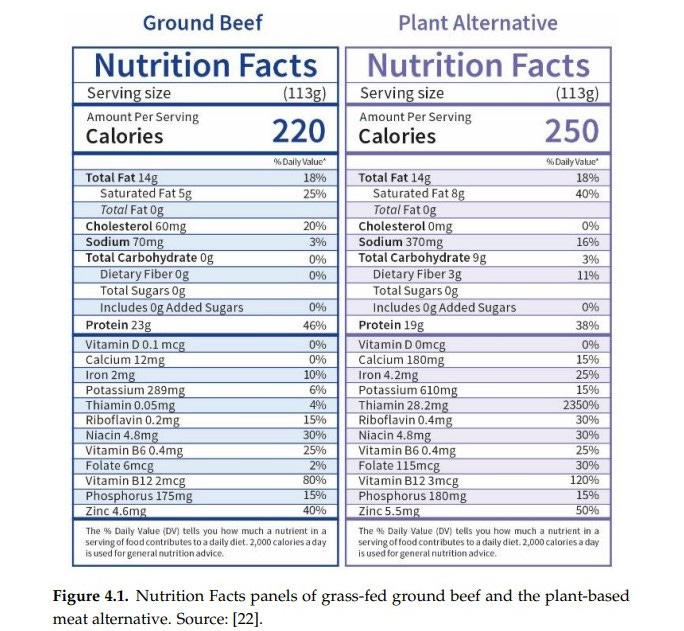
These foods appear to be nutritionally equivalent, but this couldn’t be any further from the truth. Artemis shares how these two differ by ~90% based on a metabolomics analysis.
“Substantial differences in metabolites within various classes (e.g., amino acids, dipeptides, vitamins, phenols, tocopherols, odd-chain saturated and unsaturated fatty acids, omega-3 fatty acids, and antioxidants) indicate that these products should not be viewed as nutritionally interchangeable.” - Artemis Simopoulos
Don’t eat a “Veggie” Burger. In fact, run like hell away from it. Instead, how about a true veggie burger or a veggie/meat hybrid? I took inspiration from a recipe for eggplant meatballs from Osteria: 1,000 Generous and Simple Recipes from Italy's Best Local Restaurants and Mint Creek’s wisdom to combine liver into their ground beef. The result - a “veggie-ish” burger made even tastier from these earthy flavors. Damn me for tossing out the good bits for all those years - the satiating fat, the bone broth, and the offal that makes any braise or sauce that much richer. Better late than never.
*Recipe: Veggie-ish Burgers
Note from Chérie: Use the best ground beef you can get your hands on - ideally one that is locally sourced and raised by those who care about the animal’s health and well-being. You are what you eat. The beauty of this recipe is that the addition of vegetables helps to offset the higher cost typical of higher-quality meat.
Cooking time: 15 minutes prep, 40 minutes cooking time (20-30 of which are inactive)
serves 3 as an entree
Ingredients:
1 pound of ground beef
1 medium-sized eggplant
1-2 teaspoons of salt
1/2 teaspoon of freshly cracked pepper
1 tablespoon parsley, roughly chopped, optional
Method:
Preheat the oven to 350 degrees Fahrenheit. Rinse and dry eggplant, cut in half crosswise, then into 6-10 spears total depending on its size. Drizzle with olive oil or melted reserve fat, sprinkle with salt, place on a flat sheet pan, and roast in the oven until soft, about 20-30 minutes.
While the eggplant roasts, prepare any sides or burger toppings, such as caramelized onions, sliced cheese, or a side salad. For the onions, you can use either yellow or red, whichever you have on hand. Slice and let cook in a well-greased cast iron skillet on medium-low heat for 20-30 minutes.
When your eggplant is done and cool enough to handle, roughly chop into small pieces (just larger than a dice), place your ground beef on to the same cutting board, scoop your diced eggplant and optional parsley over top, and chop the eggplant/parsley combination into the ground beef. Note: You want to chop since too much stirring or squishing can cause the meat to toughen. Salt and pepper to your liking, then form into 3 patties.
Generously grease a cast iron skillet and sear the hamburgers for roughly 2.5-3 minutes per side (for medium-rare) over medium heat. These burgers will cook similar to any other burger, they just need a bit more fat in the pan so any exposed eggplant doesn’t burn or stick. Serve alongside a salad and your favorite beer, perhaps.
In good health,
Chérie
THANK YOU FOR READING! THE SAVORY WOULDN’T BE HERE IF IT WEREN’T FOR YOUR SUPPORT ♥️
If you like what you’ve read, consider upgrading to a paid subscription, or even better, share The Savory with anyone and everyone you know!





